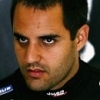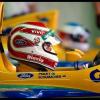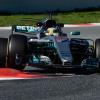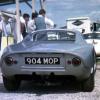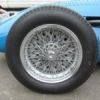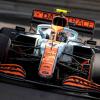During the winter break I have been wrestling and wrangling with my relationship to F1, and amidst this self-inflicted thought experiment have stumbled upon a theory. Let me explain.
In the earlier days, the best way to follow a grand prix was by watching the pictures and listening to the commentary. Any graphics that did appear only served to remind you of information you likely already knew, and were so scarce and sporadic that it was impossible to gauge the story of a race from graphics alone. In hindsight, this practice now appears ludicrous, but it's fair to say we managed just fine at the time, and my argument is that the scarcity of information made grand prix far more exciting to follow. To build and understand the unfolding picture of a race in your mind was both a skill in its application, but also a blessing in its ability to capture and engage fans.



Graphics like this didn't even appear every lap. There would be a sprinkling at the start and during the opening laps, but afterwards it was usually every 3 to 5 laps, sometimes with time gaps, sometimes with the amount of pit stops. In the heat of battle, information would be delivered lap-by-lap, or on the rarest of occasions sector-by-sector! These organic pauses filled a broadcast with anticipation and tension. If one driver was chasing another, you would have to wait at least 60 seconds for the precious update, and as a fan this time was filled by intently watching the pictures, trying to guesstimate the gap yourself, or studying a driver's onboard camera to see how hard they were pushing. I could compare this to watching a movie, piecing together the action scene-by-scene. Just enough information at just the right frequency to keep you on the edge of your seat.
It wasn't until the late 2000s and early 2010s when the delivery and frequency of information changed, by way of the timing ribbon across the bottom of the screen.



This brought with it the introduction of mini-sectors, allowing the gaps and intervals to update before your very eyes. However, the ribbon wasn't ever-present on the broadcast. Even when it was on screen, because it either scrolled or refreshed through the field, if you were following a driver or battle exclusively through the graphics, you still had to wait 30-45 seconds before your next hit of data.
In 2017, the timing tower was born, but it still wasn't ever-present and would routinely disappear in favour of battle-specific graphics and other tidbits. Sometimes the tower and ribbon would be used interchangeably. When the tower was used, its primary purpose was for summary and classification. A quick "snapshot" before disappearing again to focus on the action. Mini-sectors were here to stay, but the first iteration of the tower did not abuse them, often favouring simpler, cleaner layouts.

However, once Liberty got their feet under the table, it was time for change. The timing tower as we know it today is affixed permanently to the left-hand side of the screen, spitting out updates every 200 metres.

Following a race has been irreversibly changed. No longer are updates fed lap-by-lap, or even sector-by-sector. Over the course of a race, one driver will record roughly 1500 mini-sectors. For a field of 20 drivers that is 30,000 individual updates.
For example, I am so well-trained in following the tower that I can usually predict an overtake based on the mini-sector gap at DRS activation. 0.800s? Too far away, 0.650s? Slam-dunk. The thrill of the chase, the heat of battle, the tension, hope and jeopardy of watching a grand prix has been surrendered to a sea of numbers, thrust before us and impossible to ignore. The magic and anticipation of live motorsport is no longer led by the camerawork and commentary but by the looming, dispassionate presence of the timing tower.
Discuss below ![]()













